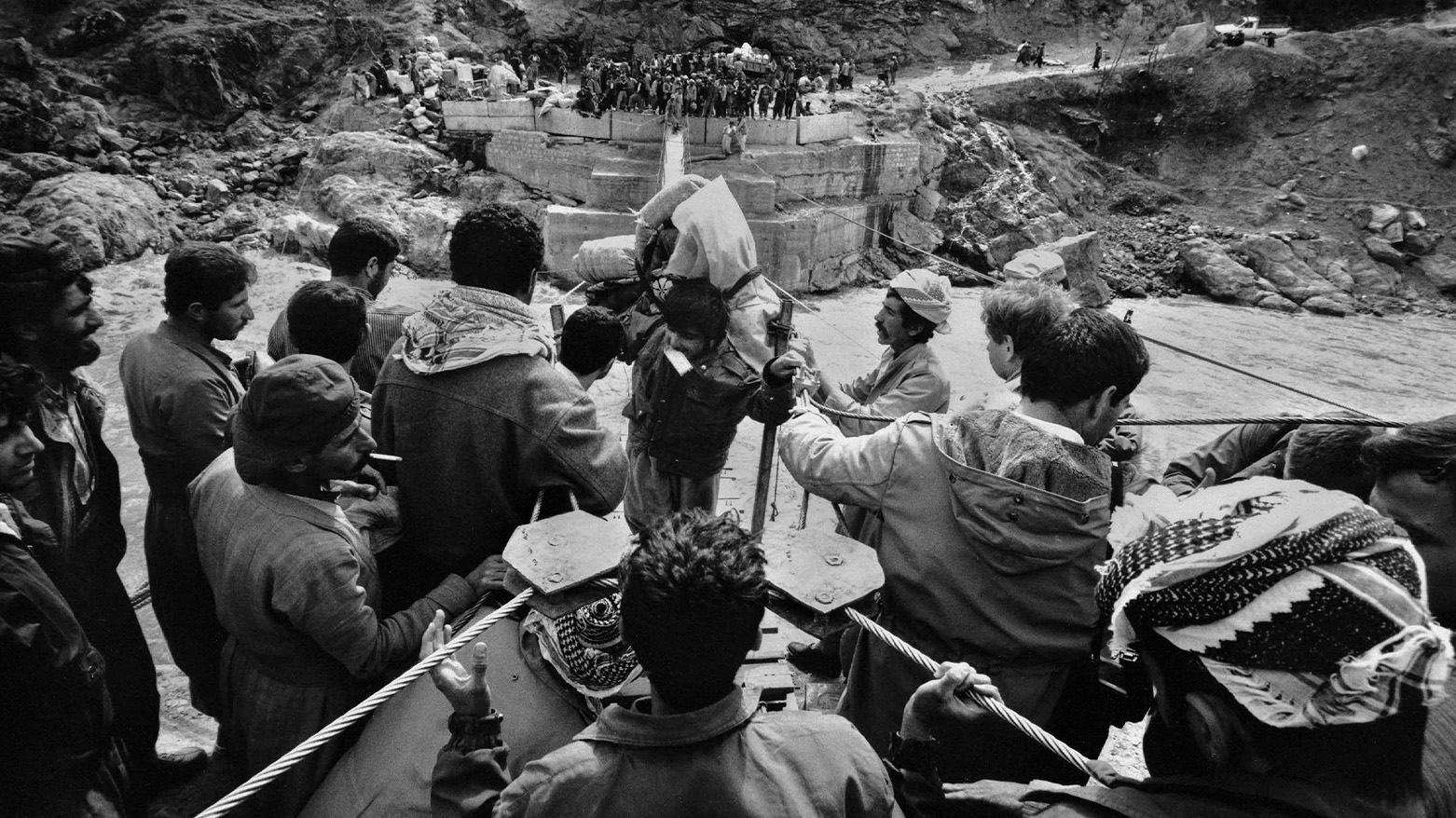March 1991: The Exodus That Shaped a Nation
The mass displacement would ultimately reshape Kurdish political reality, laying the foundation for the creation of the Kurdistan Region as a political entity and reality.

By Kamaran Aziz
ERBIL (Kurdistan24) — On March 31, 2025, the Kurdistan Region marks the 34th anniversary of the mass exodus of 1991, one of the most harrowing episodes in modern Kurdish history. Triggered by fears of brutal retaliation by Saddam Hussein’s Baathist regime following the Kurdish uprising of that year, more than a million Kurds fled their homes, embarking on grueling journeys toward the borders of Iran and Turkey.
The mass displacement would ultimately reshape Kurdish political reality, laying the foundation for the creation of the Kurdistan Region as a political entity and reality.
According to records from the Kurdistan Regional Government and historical archives from the United Nations High Commissioner for Refugees (UNHCR), the Kurdish uprising began shortly after the U.S.-led coalition expelled Iraqi forces from Kuwait during the Gulf War. On March 31, 1991—just ten days after much of southern Kurdistan had been liberated by Peshmerga fighters—the Iraqi army launched a ferocious ground and air offensive, striking fear into the population with memories of the 1988 Anfal genocide and the chemical attacks on Halabja still fresh.
As reported by the BBC and chronicled by photojournalists such as Richard Wayman, who documented the aftermath from the Turkish border, the Kurdish resistance was attacked within days by Saddam’s elite Republican Guard. The regime’s use of helicopters—permitted under the Gulf War ceasefire—proved decisive, as Kurdish forces lacked both the firepower and air defenses to repel the assault.
The result was a humanitarian catastrophe: more than 1.5 million Kurds—children, the elderly, and the infirm among them—fled toward the frontiers in desperation.
The United Nations reported that by April 6, 1991, some 750,000 Kurds had entered Iran, 280,000 had crossed into Turkey, and nearly 300,000 remained stranded along the border zones without food, shelter, or medical care. Thousands died from exposure, particularly children and the elderly, as they camped in freezing mountain terrain. While Iran opened its borders immediately, Turkey initially resisted, only relenting after international pressure and the promise of financial aid.
The United States Air Force’s official records note that the humanitarian crisis prompted an urgent global response. On April 3, 1991, the UN Security Council authorized relief efforts, and just days later, Washington launched Operation Provide Comfort. Operating out of Turkey’s Incirlik Air Base, the U.S. Air Force deployed C-130 aircraft to begin airdrops of essential supplies.
Soon after, ground forces led by Lt. Gen. John Shalikashvili established temporary refugee camps and a “safe haven” in northern Iraq. By July, the U.S. had delivered more than 7,000 tons of aid and enforced a no-fly zone that would become the cornerstone of Kurdish protection.
As reported in U.S. military archives, Operation Provide Comfort eventually evolved into Operation Northern Watch, with fighter jets monitoring Iraqi airspace and retaliating against threats to the Kurdish population.
The no-fly zone effectively eroded Baghdad’s control over the region, and in 1992, the Kurdistan Front—an alliance of Kurdish political parties—held the first parliamentary and presidential elections, forming the Kurdistan Regional Government (KRG).
According to the KRG’s official historical documentation, the rise of de facto autonomy was also marked by severe economic hardship. Though Saddam had withdrawn his military and administrative apparatus from the north, he imposed an internal blockade, hoping to strangle the fledgling Kurdish administration into submission. Nonetheless, the Kurds persisted, leveraging international support and institutional legitimacy to begin building a governance structure that would endure even after the fall of Saddam in 2003.
The 1991 exodus is a defining event not only in Kurdish collective memory but also in global humanitarian history. According to Dr. Gregory Ball of the U.S. Air Force Historical Research Agency, the lessons from Operation Provide Comfort set precedents for future humanitarian interventions, including the importance of precise airdrops, coordinated command structures, and defined exit strategies.
Yet the most enduring legacy may be the empowerment of a people long denied recognition and the creation of safe zones that would shelter them from further genocide.
As the Kurdistan Region today reflects on that fateful spring, many Kurds see the events of 1991 as the crucible in which their current autonomy was forged. The trauma of displacement, the solidarity of international allies, and the resilience of a nation under siege have become foundational narratives in the Kurdish pursuit of self-determination.
Three decades on, the shadows of Halabja and Anfal still loom large, but so too does the legacy of resistance and rebirth. On this solemn anniversary, the people of Kurdistan remember the pain, honor the sacrifices, and reaffirm the journey from mass exodus to regional governance—a journey born out of tragedy, sustained through struggle, and carried forward with hope.
